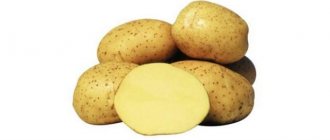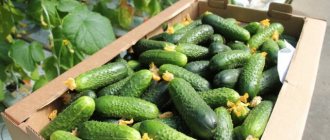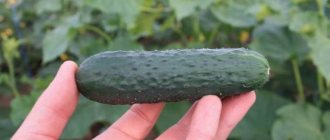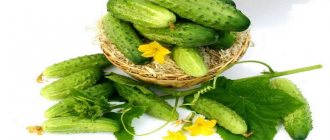What it is?
Planting potatoes in a barrel is an alternative method of growing this crop. This method has proven itself well in small summer cottages. In a small area, you can grow the tuber crop necessary for the family, and use the freed land to grow other vegetable crops.
Original methods
Unusual, but scientifically proven methods of growing potatoes help to get a rich harvest with a minimum of labor costs.
Fokin method
Fokin is the creator of a flat cutter, a device that facilitates the farming process. When growing potatoes, it allows you to form furrows and beds, as well as hill up.
Joint planting with legumes
Legume seeds are sown after potatoes in the same row, placing them between potato bushes. This proximity helps to compact the plantings, enrich the soil with nitrogen compounds and protect against the Colorado potato beetle.
According to Mittleider
The method involves the use of narrow ridges with wide passages between them. Potatoes are provided with access to nutrients while using water sparingly.
Gülich technology
The tubers are laid out in nests filled with manure, formed in the center of squares with a side of 49 cm. Then the planting material is again covered with manure and covered with a mound of earth in the form of a pyramid. Care involves removing weeds and adding pyramids.
Dutch technology
Potatoes are planted in long furrows at a shallow depth, which ensures free penetration of air to the roots, good lighting and prevents the accumulation of excess moisture.
Balabanov method
Tubers are planted in ridges delimited by wide row spacing (up to 120 cm). The soil is not dug up, but planting material is lowered into small holes at the top of the ridge.
Folk method
Circular cutting of tubers to a depth of 1 cm before planting promotes massive growth of lower buds and uniform distribution of nutrients.
Other
Flowering potato buds are torn off and the stems are broken off to increase yield. However, this method is associated with damage to the plant and can have unpleasant consequences.
Productivity
Experimental summer residents, when mastering new methods of planting vegetables, always evaluate their productivity. Vegetable growers provide statistics:
- barrel with a capacity of 200 liters;
- 8 seed potatoes;
- adding soil 6–7 times per season;
- feeding;
- regular watering;
- harvest 3 buckets.
Pros and cons of the method
We can talk about the advantages of this method for a long time. The first advantage over conventional planting in the ground is accelerated maturation. The harvest will ripen a month earlier than with traditional planting in holes. The ripening time is reduced due to the early heating of the soil in the planting container and the possibility of earlier planting.
The second advantage is saving space. The third is the lack of traditional methods of care: weeding, hilling, loosening. The main advantage is the free time that has appeared, which can be spent not on hard physical labor, but on a pleasant summer vacation. Another useful point is that the soil can be used several times; it can be restored with the help of autumn planting of green manure.
This method has a drawback - the soil dries out quickly and requires regular watering. Summer residents who rarely visit their dachas find it difficult to control soil moisture, which can negatively affect the volume of the harvest.
Harvesting and storing potatoes
What time to harvest
As a rule, you can start harvesting potatoes after the tops on the bushes turn yellow and dry. As a rule, harvesting is carried out 70–100 days after planting the tubers in open ground. To be sure that it is time to dig the potatoes, you should remove several bushes from the ground; if the root crops are ripe, you can start harvesting. Remember that harvesting root crops should not be postponed until later, since if the tops dry out completely, and the tubers then remain in the ground for a long time, their weight will decrease significantly, and this will also negatively affect their ability to be stored.
Experienced gardeners advise, if possible, 15 days before harvesting, to shorten the potato tops to 10 centimeters by mowing them. Then it should be collected and destroyed, since harmful insects, as well as pathogens, can accumulate in it over the course of a season. Harvesting should be done on a sunny, dry day. To dig up bushes, you can use a walk-behind tractor, a pitchfork with blunt arrows, or a shovel. It is recommended to leave the dug up root crops on the surface of the site for a while so that they can dry out. After this, they need to be collected and poured into bags, which are put in a shaded place (for example, a dry barn), where they will stay for 15 days. At the end of the allotted period, the skin on the tubers will become stronger and denser, and the infected root crops will have time to show signs of the disease. It should be taken into account that all this time the potatoes can be in bags, but if possible they are poured out of them onto the floor (the thickness of the layer should not be more than 0.5 m). When half a month has passed, you can start sorting the potatoes, and you need to remove all disease-damaged and injured tubers, and you should also select potatoes that belong to those varieties that cannot be stored for a long time. Then the potatoes can be stored in storage. Do not forget to select planting material for the next season; it must be kept in a well-lit place until the tubers have a green tint. Then the seed potatoes are also placed in storage.
To store such root vegetables, it is recommended to use a cellar or basement, the main thing is that the storage is cool, dry, dark and has good ventilation. It must also be protected from rain and frost. It is very convenient to use lattice trays for storing potato tubers. It is recommended to make quite spacious bins out of them, into which the root crops must be poured in a layer no thicker than half a meter. The bottom and walls of such a bin will be lattice, air will be able to flow freely to the potatoes. For storage, you can also use small wooden boxes designed for apples, which should be placed one on top of the other. To keep root crops better, it is recommended to cover them with rowan leaves. The best storage conditions for root vegetables: air humidity is from 85 to 90 percent, and temperature is from 2 to 3 degrees. If it is warmer in the storage, the sprouts will grow very early, and solanine, which is dangerous to the human body, will begin to accumulate in the tubers, but if it is colder there, the tubers will freeze, as a result of which they will acquire a very sweet taste. In the absence of a utility room or if there are no conditions for storing this vegetable, then potatoes can be placed in fabric bags on the balcony, but they should first be placed in wooden containers that have holes for ventilation. The container should not be placed on the floor or placed near a wall. There should be a gap of 15 centimeters on each side, as well as on the bottom of the container, this is necessary for good ventilation. With the onset of frost, the container with potatoes must be covered with an unnecessary blanket or carpet, in which case the tubers will be able to withstand temperatures dropping to minus 15 degrees. If the root crops are placed in the corridor, living room or pantry, then they can remain there for no more than 12 weeks.
All about growing potatoes. HARVESTING AND STORING POTATOES. Part 6
Watch this video on YouTube
Suitable varieties
Tasty potatoes will grow if the right variety is chosen. Summer residents tried the following varieties for planting in barrels:
- Timo.
- Zhukovsky early.
- Cardinal.
- Lyra.
To get an early harvest, you should choose early-ripening, large-fruited varieties.
Tools
To prepare the container for planting, you will need tools. First of all, you need to have a drill and metal drill bits. It is worth purchasing a metal drill of the largest size (10–13 mm).
See also
Instructions for using the product Lightning from the Colorado potato beetleRead
How to build a barrel?
Good results are obtained when using metal barrels. If the container has been used, then only for the purpose of storing food products. The optimal volume is 200 l. The height of the barrel must be at least 60 cm. Plastic barrels can also be used. Wooden barrels are not suitable for growing potatoes.
In order for the potatoes to breathe as they grow, holes need to be made in the barrel. For this we have a drill and a drill bit. There should be a lot of holes. It is recommended to place them at a distance of 20 cm from each other. The holes should be evenly distributed around the entire perimeter.
The bottom of the container also needs to be prepared. There are two options:
- knock out the bottom;
- drill many holes, leaving a distance of no more than 3 cm between them.
This procedure for preparing the bottom is important - excess moisture will flow out through the holes, which will eliminate the processes of rotting.
How to grow potatoes in a container or box
To achieve the desired result through the use of alternative planting methods, you need to know how to prepare the container, what to fill it with and how to care for it in the future.
Selection and preparation of containers
If potatoes will be grown in barrels, then metal, wooden or plastic containers, the height of which should be at least 30 cm, are suitable for these purposes. There is no point in choosing smaller container volumes, otherwise the plants will experience a lack of moisture and oxygen. A poorly moistened substrate will not be able to provide comfortable conditions for the growth and development of a vegetable crop, therefore, there can be no question of a harvest.
The main requirement for a container is that it does not have a bottom. This measure is needed to allow earthworms free access to the soil. You also need to make holes in the container with a diameter of 1 cm every 10-15 cm. They will be able to ensure the outflow of excess moisture and allow the roots to avoid oxygen starvation. In addition, you also need to place a rubber hose on the bottom of the barrel, pre-rolled in a spiral, where the distance between the turns is 8 cm. Holes are made in it at intervals of 15 cm, its inner end is tightly plugged, and the outer end is brought out, through it when With the help of a pump, the soil will be saturated with air. The number of procedures per week is 3 times.
When growing potatoes in boxes, stakes are first driven into the ground, and then walls made of boards (pine bars) are attached to them using wire material. Alternatively, you can install boxes without a bottom on top of each other. Another good material to use is pallets. The stakes are mounted on a flat, slightly elevated and sufficiently illuminated area.
Preparing the substrate
In order to enrich the substrate, in addition to peat, it is effective to add sand (1/4 of the total volume), chalk or lime flour. When using wet peat, you will need 70 g of such flour per 10 kg, and if you choose dry peat, 75-80 g. If it is not possible to get peat, then the substrate is prepared from compost, garden soil and wood ash. The last component, a product of combustion of plant waste, is needed to protect tubers from all kinds of diseases. It is recommended to place the boxes in a sunny area or in partial shade. If you install the container in shaded areas, then there is a high probability of developing a dangerous disease - late blight.
Landing technology
Step-by-step instructions for growing potatoes in containers, boxes, boxes:
- Having selected a suitable potato variety (Slavyanka, Zhukovsky early, Lira, Cardinal, Desnitsa, Bezhitsky), the planting material is processed.
- A layer of soil, the thickness of which is 10-16 cm, is poured into the container installed on the site.
- Root vegetables are placed at a distance of 15-20 cm and moistened abundantly.
- Sprinkle with a layer of mixture (12 cm)
- When the sprouts appear and grow to a height of 3-4 cm, add another layer of soil (2-3 cm).
- As the bush grows, fill the container with fertile substrate.
Soil preparation
The planting mixture must be nutritious, so it is prepared from humus, compost and garden soil (1:1:1). It will be necessary to treat the soil against pest larvae and infections. If the soil is harvested in the fall, the soil can be treated with a chemical; during spring preparation, it is better to warm it up or treat it with a solution of potassium permanganate or Fitosporin.
Fertilizers needed:
- double superphosphate;
- ash;
- ammonium nitrate.
Dolomite flour and magnesium sulfate are added to sandy soil. All ingredients are mixed well. A certain amount of fertilizer is added to the soil exactly according to the instructions.
Step-by-step cultivation technology
To grow potatoes in a barrel, you need to follow the technology, going step by step:
- Selecting the appropriate potato variety.
- We take the tubers out of the cellar 2 weeks before planting and germinate them in a dark room.
- Before planting, we treat potatoes with any modern preparation that combines the properties of an insecticide and fungicide.
- Preparing the soil.
- Pour 15 cm of soil into a container.
- Place the tubers with the sprouts facing up, leaving a distance of at least 20 cm between them.
- Cover the potatoes with a 10 cm layer of soil.
- We water it.
- When sprouts 7–10 cm long appear, cover them with soil and repeat this procedure 6–7 times.
- When the soil level rises by 1 meter, fertilize the potatoes.
- Then the normal growth of tops and the active formation of tubers begins.
- At the end of the growing season, the soil is poured out of the barrel and the crop is harvested.
See also
List of the best potato varieties for 2021, taking into account various criteriaRead
How to plant potatoes correctly to get a good harvest
Selection and pre-planting of potatoes is one of the key factors in ensuring increased yield. For seed material, select healthy tubers without damage measuring 5-6 cm and weighing 50-80 g.
Germination accelerates the emergence of seedlings. There are several ways:
- The tubers are kept in the light for 2-3 weeks at a temperature of +12…+15°C.
- In a damp substrate (peat, sawdust) with a layer thickness of 5-7 cm for 20 days.
- In plastic bags of 12 pcs. in everyone. Make several holes and hang them near a shaded window or fence for three weeks.
- In a greenhouse, potatoes are laid out on a thick layer of hay and covered with film with air holes on the sides for 12-15 days.
Potato consumption per acre depends on the method and density of planting. The optimal amount is considered to be 25-30 kg, the minimum - 20 kg. With an average tuber weight of 50 g per hundred square meters, about 500 tubers (25 kg) are needed. Holes are made every 30 cm. Planting density depends on the size of the tubers.
Manually
Gardeners traditionally plant potatoes by hand, using gardening tools and simple equipment. The method is chosen taking into account the condition of the ground, groundwater level and the size of the site.
Planting with a shovel
Planting with a shovel is the basic “old-fashioned” option, but most justified on light soils with low water levels.
Future beds are marked using pegs and twine. In a pre-dug area, holes 6-10 cm deep are made every 27-30 cm and the tubers are laid out. A handful of humus or compost is thrown on top and covered with earth. Row spacing is 65-70 cm.
Planting in ridges
The principle of the method in replacing holes with shallow grooves:
- A rope stretched along the site marks the direction of the furrows. Grooves are formed into which the tubers are laid out at a certain interval.
- Use a rake to fill the soil back on both sides.
- Retreat 60-70 cm and repeat the actions.
This method is also used for double rows. The distance between adjacent ridges is 20-30 cm, and the row spacing is increased to 90-110 cm.
Trench beds
The trench planting method is believed to help increase the yield and fertility of the site. In hot climates, the tubers and soil in such beds do not dry out. On sandy soils, potatoes will receive more moisture.
Trenches for next year have been prepared since the fall:
- Mark the location of the rows and dig trenches on the bayonet of the shovel. The earth is laid on one side.
- The bottom is covered with plant debris, fallen leaves and sprinkled with earth.
- In the spring, a little soil from the top of the ridges is again added to the trench, dusted with ash, potatoes are laid out and covered with earth.
- As sprouts appear, the plantings are earthed up.
Landing on ridges
In areas with coarse clay soil, where there is constant moisture due to a high groundwater level, the ridge method is very effective and therefore preferable.
Operating procedure:
- In autumn or spring, the area is plowed with a motor cultivator, and mineral fertilizers are applied at the same time.
- Ridges are formed 13-15 cm high and 50 cm wide with a row spacing of 60-70 cm.
- Holes are made in the middle of the elevation and the tubers are planted.
The larger the tubers, the deeper they are planted.
Using a walk-behind tractor
Using a walk-behind tractor for planting potatoes makes the process easier. This method is used on all types of soils. It is divided into several ways.
Under the plow
Planting potatoes is carried out by two people. One person makes a straight furrow with a walk-behind tractor so that the plow goes to the depth of a bayonet shovel. The second one follows and lays the tubers at a distance of 25-30 cm. On the way back, another row is made, and the previous one is covered with earth from the plowed furrow.
Using a hiller
First, furrows are cut and the potatoes are laid out. On the walk-behind tractor, replace the lugs with regular rubber ones and attach the hiller. When passing through the rows again, he covers them with earth and compacts them with plates.
Potato planter
This method requires the purchase of a mounted potato planter. It pays off for large-scale sowings and significantly speeds up work. In one pass, the device makes furrows, lowers the tuber into the ground, and the disc hiller fills the hole. The wheels are fitted with lugs.
Top dressing
Nutrients are actively consumed, fertilizing helps restore soil fertility, using:
- herbal infusions;
- ash infusion;
- complex mineral fertilizers for potatoes;
- during flowering superphosphate.
Urea and ammonium nitrate should not be used as fertilizer; it is enough to add them to the soil when planting. Excess nitrogen has a bad effect on the quality of tubers. Adding phosphorus-potassium fertilizers to the soil brings more benefits.
Necessary care
The main care will be watering. The soil in the container should not dry out, but the water in it should not stagnate. Watering is required when the top layer of soil dries out. All other work on caring for potatoes in a barrel comes down to:
- to prepare the soil mixture before planting;
- adding it to the container as the tops grow;
- During the season, potatoes need to be fed at least 3 times with balanced fertilizers.
Dry tops indicate that it is time to harvest the potatoes and that all seasonal work on growing them has ended.
Diseases and pests
There will be no need to fight pests and diseases if the soil and tubers are treated against pests and diseases before planting. Even if there is prolonged rain, potatoes are not at risk of late blight. The barrel can be covered from rain with a polyethylene cape.
Potatoes rarely suffer from diseases and pests. Disinfection of tubers during planting serves as a good preventative measure. In case of prolonged bad weather, the container can be covered with cellophane; this will protect against excess moisture, which means it will avoid fungal diseases (late blight, rot).
We suggest you read: Yellow gentian - care and cultivation
Harvesting
Harvesting is easy. As soon as the tops dry, you can put the barrel on its side and rake out the earth along with the tubers. The entire harvesting procedure comes down to collecting potatoes and clearing them from the ground. The most interesting point is the assessment of the method’s yield. Some gardeners manage to harvest a whole bag of potatoes from one barrel.
Comparison with planting in bags and boxes
The principle of planting potatoes in boxes and bags is almost no different from planting them in a barrel. The soil needs to be prepared in the same way; you can take ordinary garden soil and treat it with Bionex.
Keep bags (boxes) with soil in a warm room; you can plant potatoes in them early. If you have a greenhouse, you can transfer the bags there already in April. Potatoes planted in boxes (bags) must be periodically covered with soil or covered with a layer of mulch. Care is identical to care for potatoes planted in a barrel. Most of the time is spent on watering.
Growing potatoes in the country under straw and in a barrel. Note to the avid summer resident
Growing potatoes in the country is not easy, but rewarding. It’s not enough to just throw potatoes into the furrows; it’s important to reap a good harvest from them. But you can only get it if you take your work seriously.
Technologies for growing potatoes are very diverse. Some of them are easier, others require some skill. Today we will talk about how to grow potatoes under straw and in a barrel. Surely many people are hearing about these methods for the first time, because every year potatoes are grown in the country using the classic method - planting tubers in the ground in garden beds. Well, it’s time to introduce new technologies on your site.
Our ancestors knew how to grow potatoes in this way 200 years ago. True, over time, most people forgot about him. Perhaps, thanks to some of our citizens, we can again use this method.
So, how to grow potatoes under straw. Select an area for planting at your dacha. There is no need to dig it up, nor do you need to apply nutritious fertilizers. After this, place the potato tubers at a distance of 30 cm, and cover them with a 30-40 cm layer of straw on top. This completes the landing. But all its care will boil down to the fact that occasionally you will have to lay a new layer of straw and water it with water. By the way, if you don’t have fresh straw, then you can easily replace it with dry grass. Also note that there is no need to hill up grown potatoes.
And the last thing that is required of you is to harvest in the fall. Although, if you planted early potatoes this way, you will be able to harvest the harvest much earlier.
Growing potatoes in a barrel
This is another original way to grow potatoes in the country. Many summer residents lack free space for planting this garden crop. It is precisely with the help of barrels that this problem can be solved.
- First, stock up on containers. It is not at all necessary that these be barrels; large plastic containers for garbage or other large containers that you have at the dacha will also work. Treat all containers with a mild bleach solution to prevent plant diseases.
- Growing potatoes in the country this way requires good drainage, so be sure to make small (about 2 cm) holes in the bottom of the container. If you wish, you can even cut off the entire bottom if you plan to place the container on the soil of the site.
- After this, pour a drainage mixture 12-18 cm deep into the bottom of the container. For example, it could be a mixture of compost, moss and nut shells. This mixture will help retain moisture for the plant root system.
- Place the tubers on a layer of soil. Make sure they are not too close to each other. After this, cover the potatoes with a layer of soil (12-14 cm) and water generously. It is important that the soil is moist all the time, but you should not overwater the plants either.
- When the plants grow, it is necessary to make the first addition of soil with compost. Add soil as the potatoes continue to grow until the entire container is filled.
Article on the topic: Prestigitator for potatoes: instructions and dosage of the product
That's all, all you have to do is wait until the potatoes grow and bloom, and a few weeks later you can start harvesting. But experienced summer residents claim that growing potatoes in the country in this way allows you to reap a good harvest. And this despite the fact that care throughout the year was minimal and not at all difficult.
This is how you can organize growing potatoes in your country house. Now it becomes clear that this is much simpler than preparing the beds, hilling the bushes and making sure that the potatoes do not subsequently become overgrown and subject to attacks by the Colorado potato beetle.











